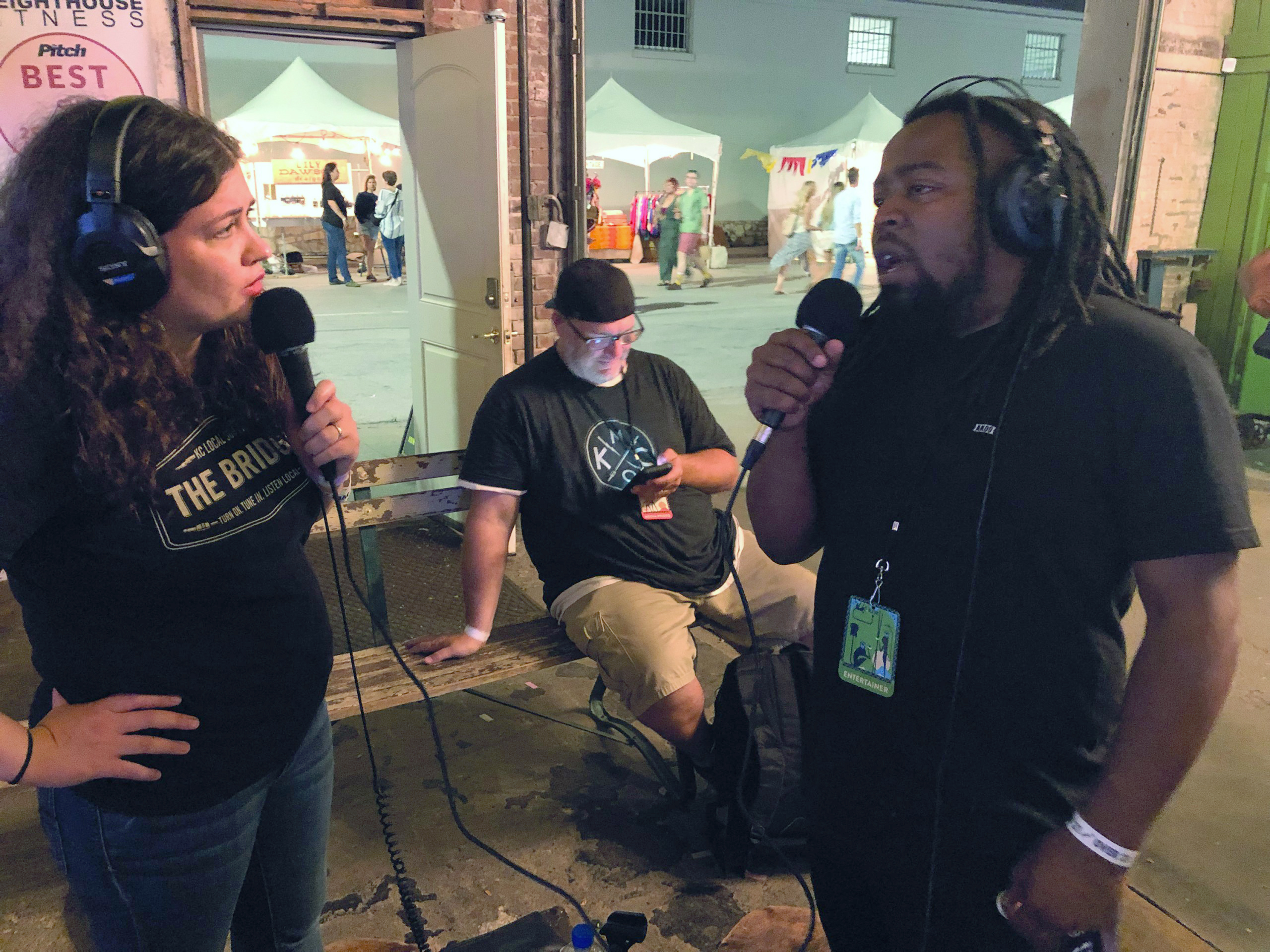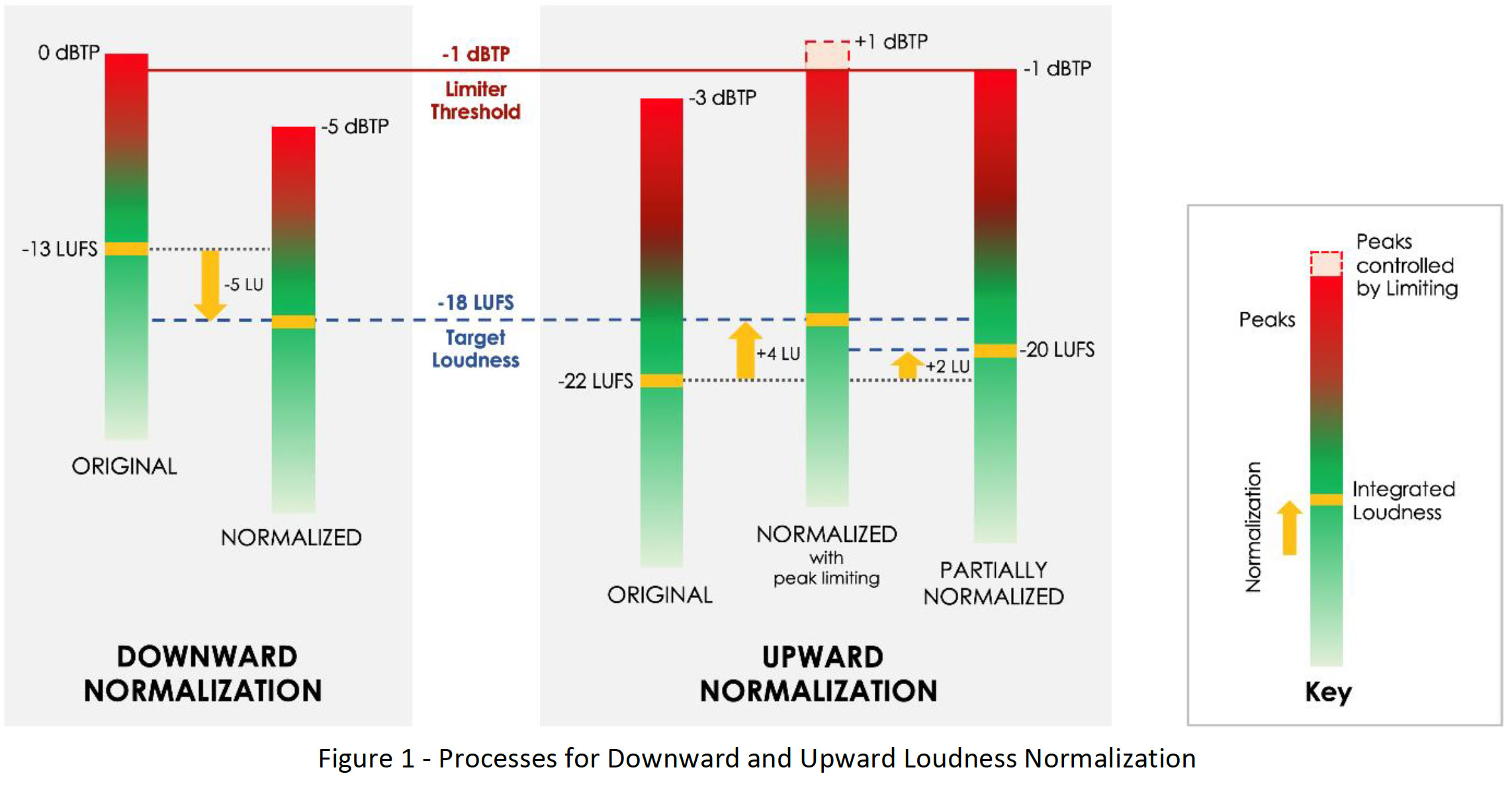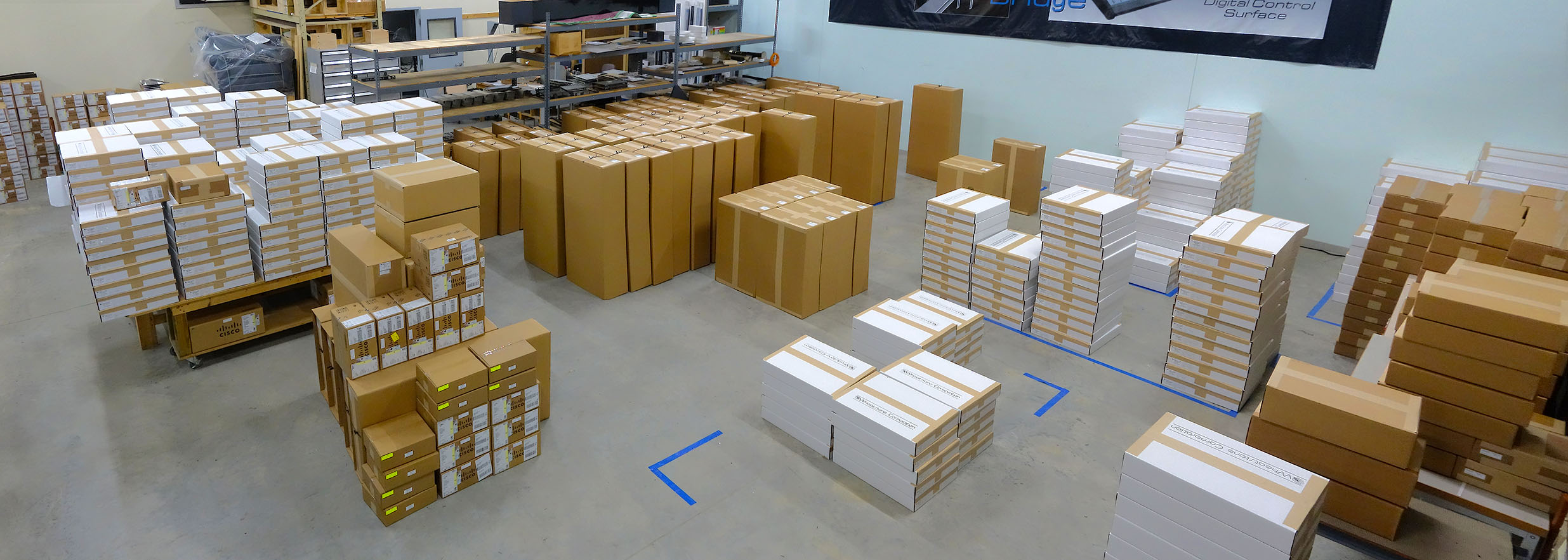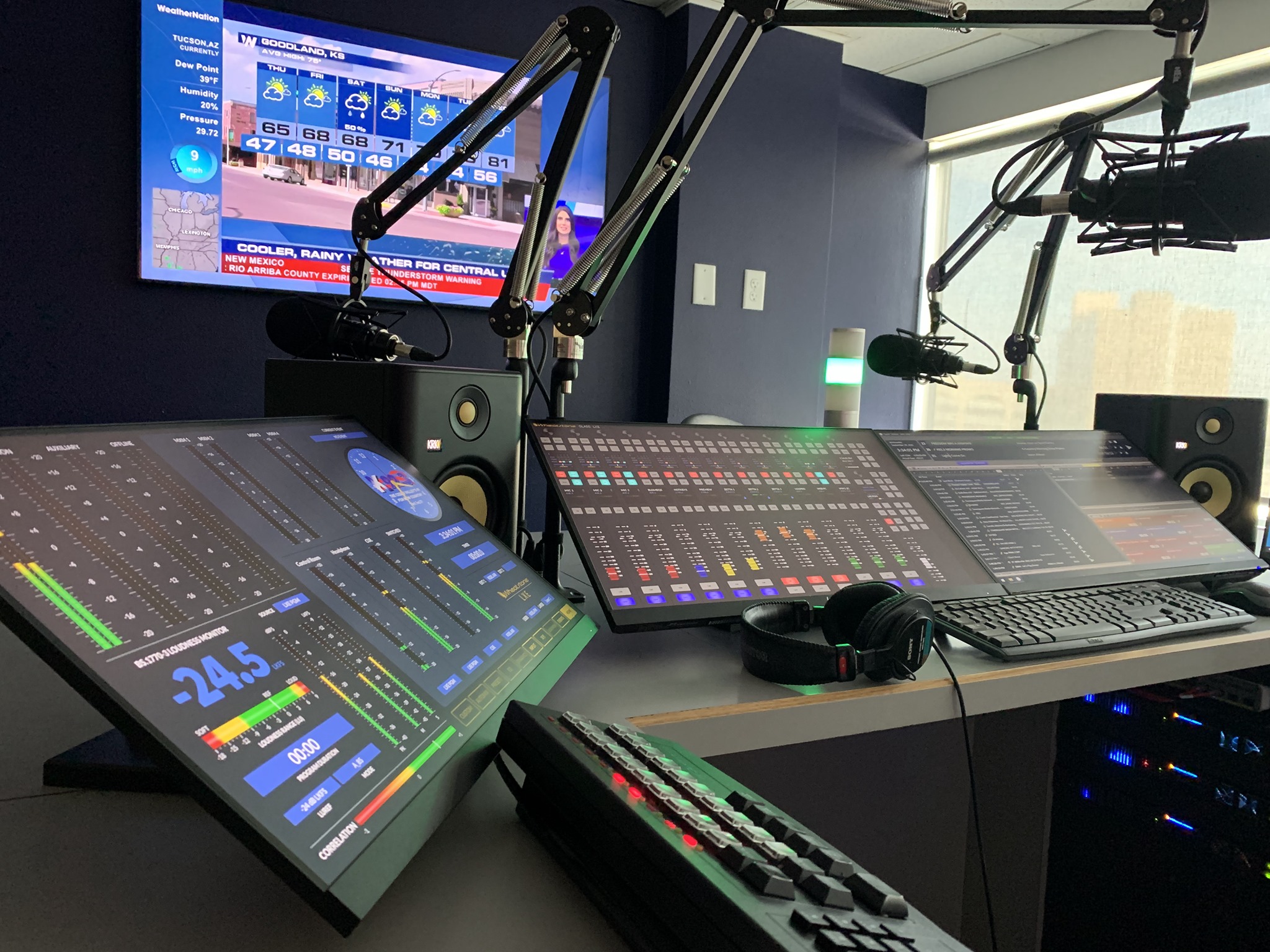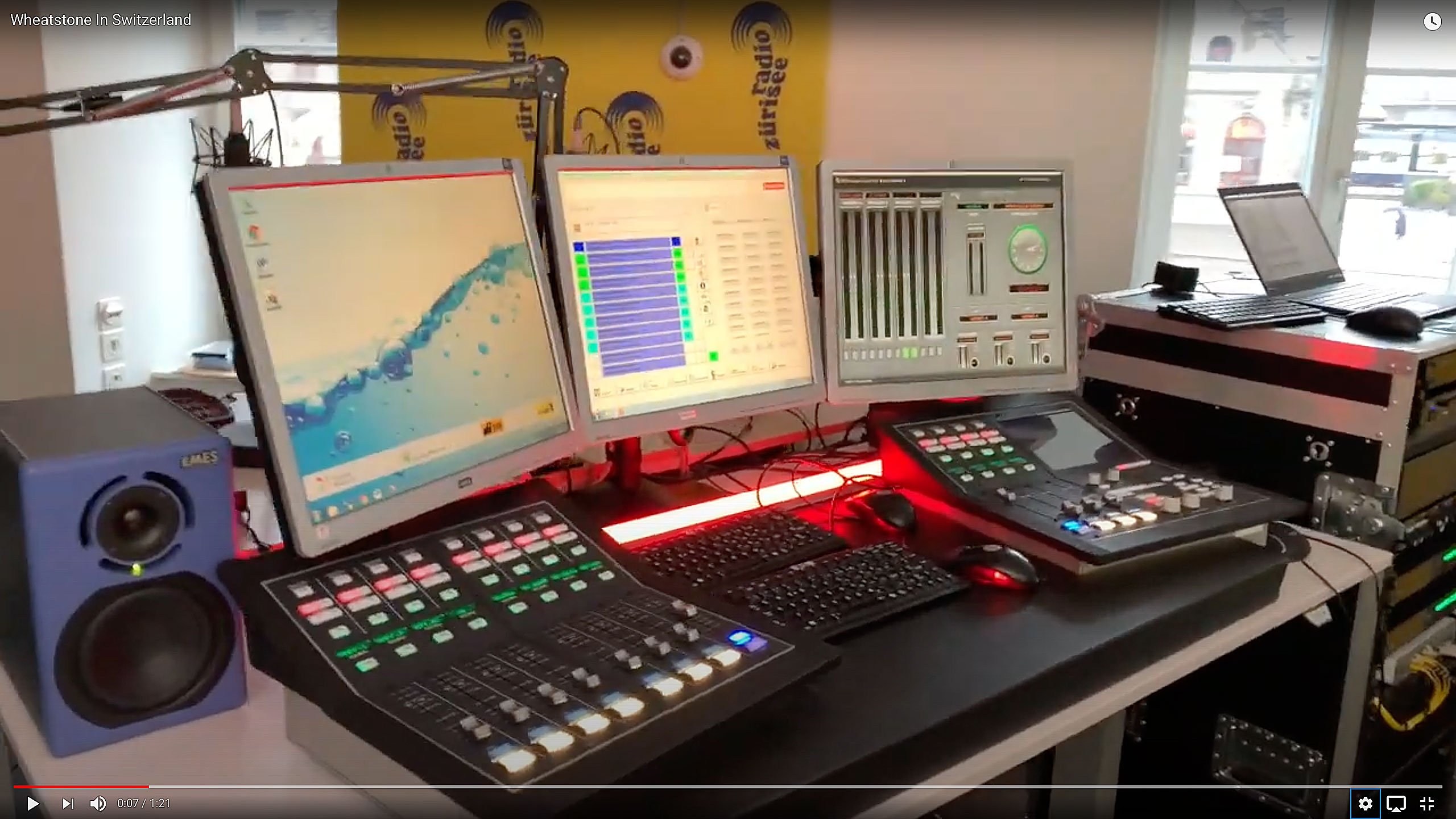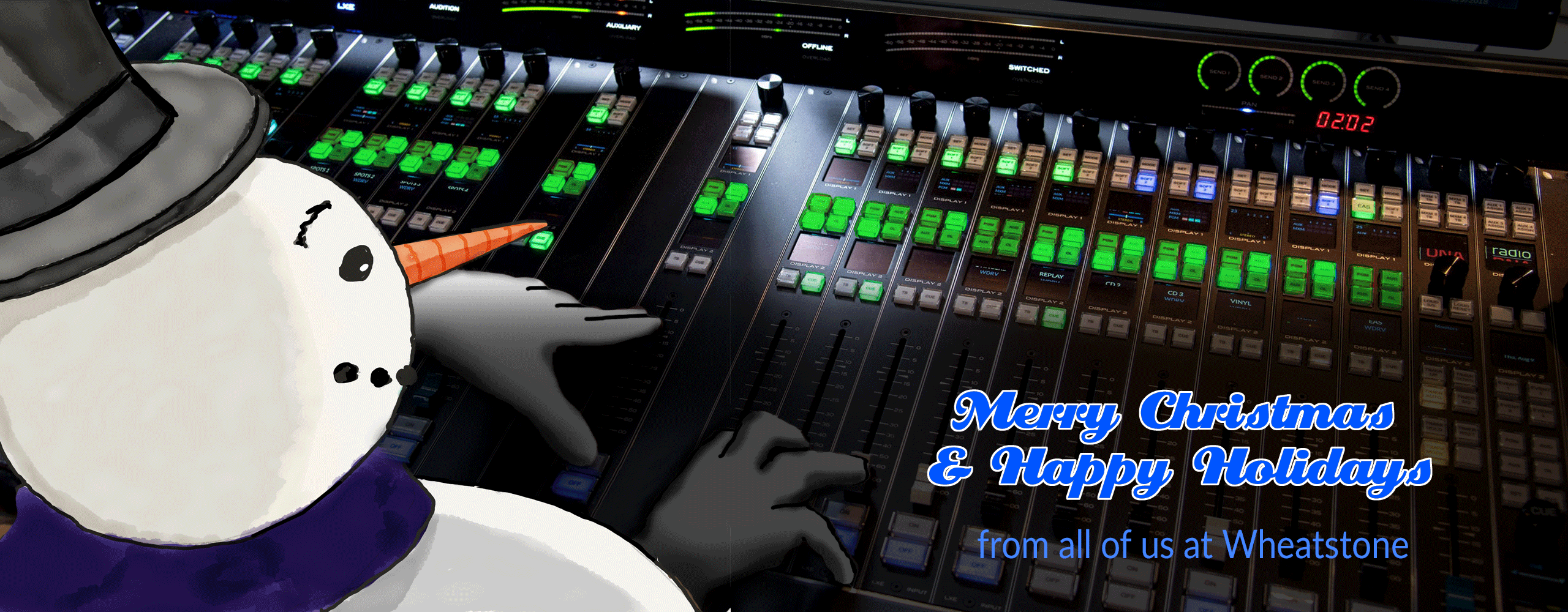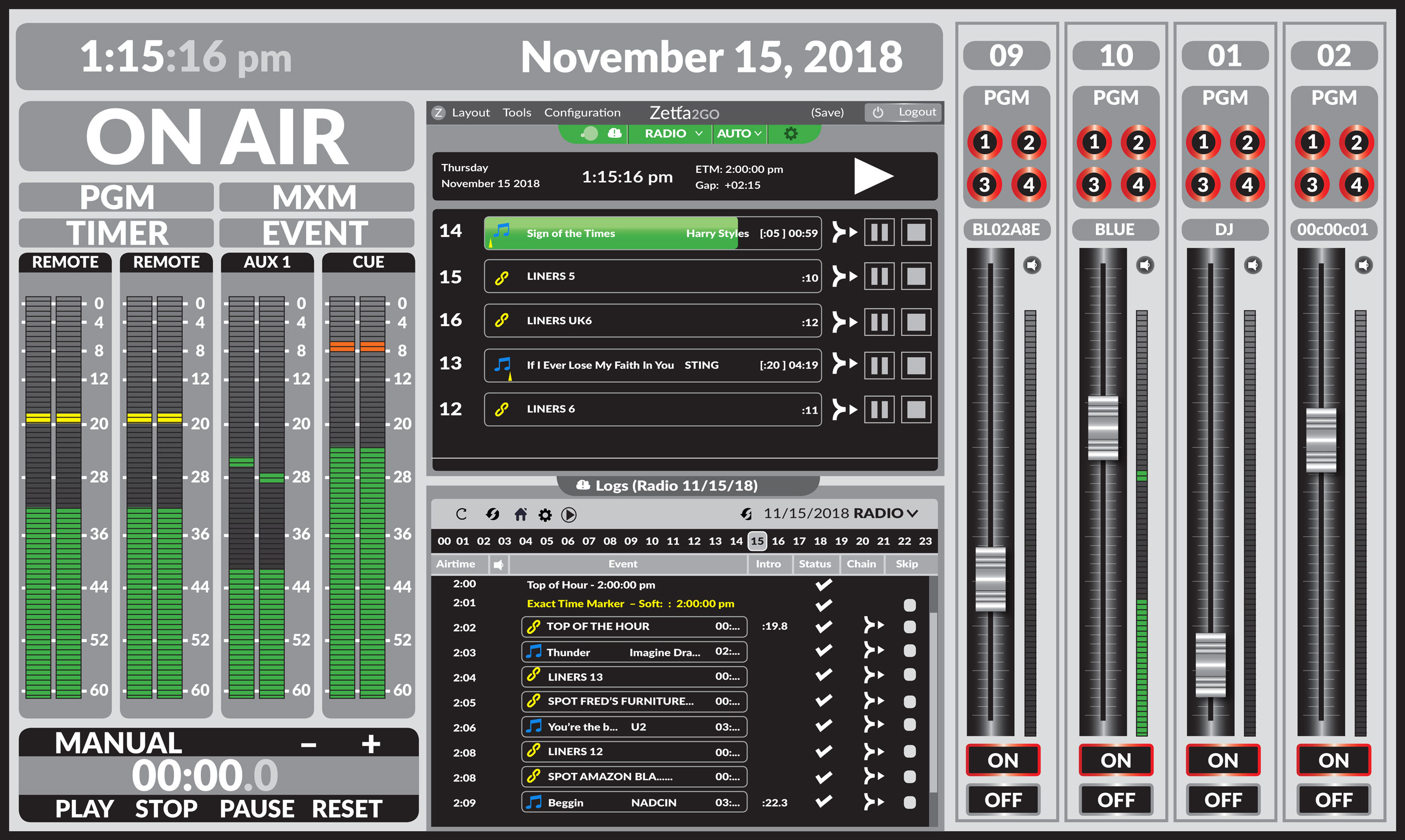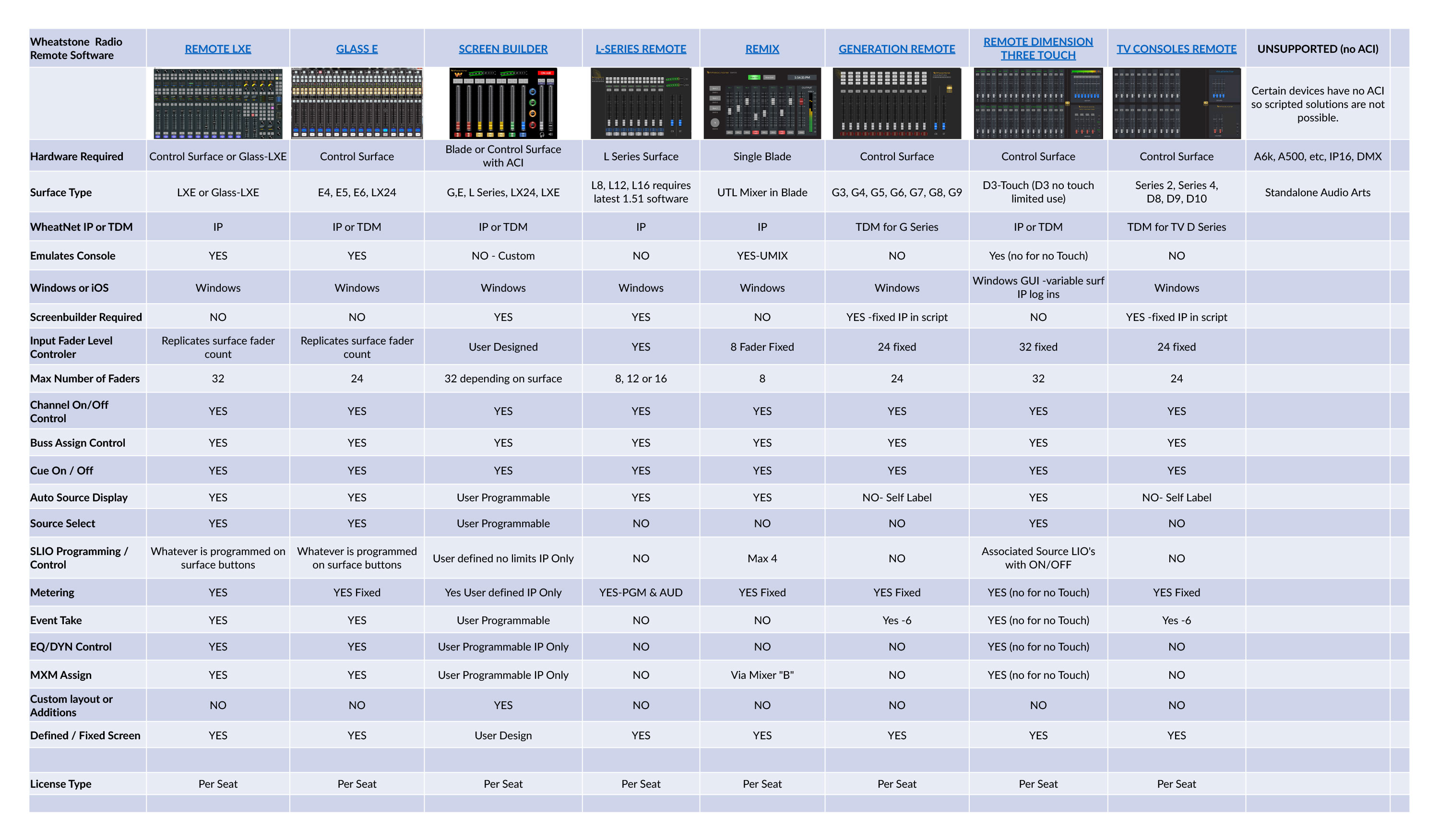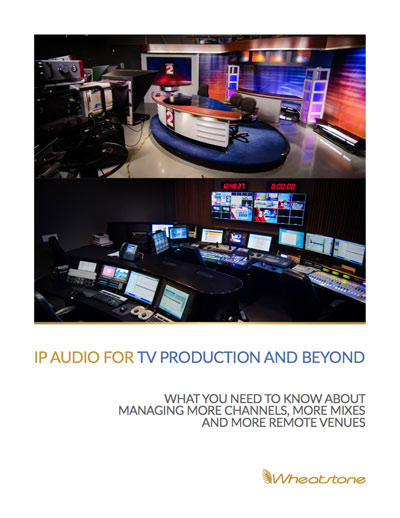WHEAT:NEWS DECEMBER 2021 Volume 12, Number 12 HAPPY HOLIDAYS!
RADIO, WE’RE READY FOR YOUR CLOSE-UP NOW
You’re looking at radio past and future.
In this photo of The Bridge’s Sarah Bradshaw interviewing a musician, you can see that radio is still very much about music and community. But take a closer look. The guy in the background holding the iPhone is a pretty good visual of the future of radio, where connectivity looms large.
When this shot was taken in December 2019, 90.9 The Bridge of Kansas City was hosting live concerts of local artists in a performance studio shared with sister television station Kansas City pubTV. At the time, planning had been moving steadily along on a major studio expansion for live performances and so much more. As a listener-supported NPR station with an eclectic adult album alternative format, The Bridge was a large visible presence in and around the community with equally sizable donations underwritten by local organizations.
The station was thriving, expanding, and connecting on every level: between artists and listeners through live events; between sponsors and community through social media; and even between studios, spaces, and elements through WheatNet-IP audio networking.
By now you’re wondering what happened when the future came crashing in on 90.9 The Bridge, just as it had for all of us in 2020 when concert halls closed and listeners retreated to their homes.
 Opening Mic to Takeout Tuesdays, Local Business
Opening Mic to Takeout Tuesdays, Local Business
A few things changed – starting, ironically, with the use of those phones we mentioned earlier. “Texting became the norm because all of our hosts were at home and couldn’t get to the studio phone, but we could all log in and see the text line,” said Bryan Truta, The Bridge’s senior director of radio operations. “Instead of ‘call us’ it became ‘just send us a text’ kind of thing.”
With listeners at home, The Bridge’s streaming numbers also shot up 52 percent in the first four months and then climbed another 36 percent two months later. While the station lost out on live concerts, and with it a sizable chunk of its underwriting, it regained most of that funding freefall through listener support. “Our membership went up over 21 percent from the previous year,” said Truta.
Instead of sponsorships, The Bridge began to fill airtime with pandemic updates from the mayor’s office and with new community programs such as Takeout Tuesday, a weekly segment that featured local restaurants. By mid-pandemic, it opened the mic to other local businesses also hit hard by the lockdown. “We had all this open inventory, so we ended up giving away $15,000 worth of free underwriting in February for minority-owned businesses, and we did the same in March for women-owned business and it was going so well, in April we did culture and arts month like ballet and opera for people who couldn’t have events, and it just kept going,” he explained.
The pandemic also strengthened The Bridge’s connection to artists, many of whom were homebound and more accessible for interviews. According to Truta, “We talked to more big-name artists the last year than we ever did because they were just sitting around too.”
As venues opened and listeners eased back into work, The Bridge’s streaming numbers have stabilized close to pre-pandemic numbers and life in and out of the studio has returned to a different normal.
Where is The Bridge now, in this new, unexpected future? Still connecting music lovers with music makers, as always. But it’s also posting, streaming, and texting as it did during the pandemic and it’s bringing all that forward into a remodeled WheatNet-IP audio networked facility that includes a new courtyard entertainment space, a performance studio seating 100 people, and living room-like studio spaces with WheatNet-IP automated cameras throughout.
“We’re going to have more production space and performance spaces and voicetrack rooms like we planned but with more connectivity to the outside, and just more connectivity in general,” commented Truta.
The new WheatNet-IP studios are expected to be completed sometime in 2022.
In August, 90.9 The Bridge was named “Radio Station of the Year” by the Missouri Broadcast Association in recognition of its exceptional community service and listener support.
AES LOUDNESS GUIDELINES RECOMMEND LOWERING SPEECH
According to AES’ new loudness guidelines for streaming and on-demand distribution, adjusting the speech portions of audio content to a consistent loudness leads to greater listener satisfaction. However, formal tests with listening panels showed that speech normalized to the same BS.1770 Integrated Loudness as music is typically perceived 2 to 3 dB louder than the music. Therefore, if operationally workable, the listener experience can be improved by normalizing music 2 or 3 LU higher than speech.
This and other helpful recommendations can be found in the new AES guideline document, which can be downloaded here: Recommendations for Loudness of Internet Audio Streaming and On-Demand Distribution.
BEST. YEAR. EVER.
Wheatstone will have completed more studio projects this year than in any other year in the history of our company, including several multi-million-dollar projects going on at the same time.
Before we close the books on 2021, we’d like to say a special thanks to all our broadcast friends for bringing us along on this great adventure known as broadcasting.
Thank you to our partners and friends at Beasley, Bonneville, Corus Entertainment, Cox, Digital Video Group, Diversified Systems, Hubbard, iHeartMedia, NRG Media, Townsquare, and so many others. The best of the season to all of our friends!
Interesting Links:
STUDIO CONSOLIDATION SPOTLIGHT
The seven-station studio consolidation project for Townsquare Media in Cedar Rapids, Iowa, included all the good stuff.
Click here for a gallery of photos taken by Jay Tyler during his visit there a few months ago.
NAB SUBGROUP TACKLES PPM ENCODING FOR STREAMING
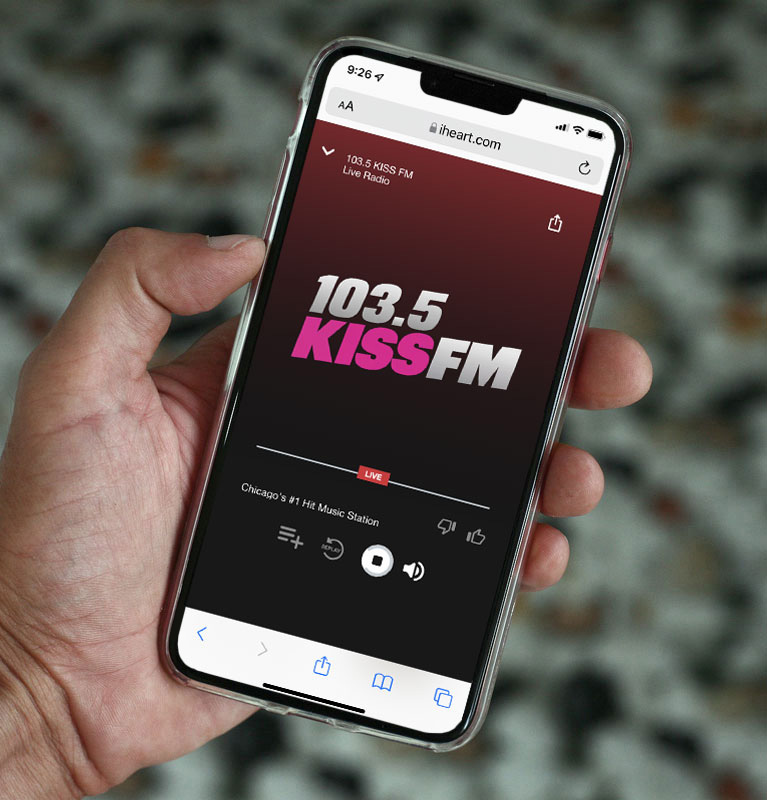 Sometimes, increasing listenership comes down to a simple math problem.
Sometimes, increasing listenership comes down to a simple math problem.
Consider that 68 percent of online listeners regularly stream their favorite radio station and that 100 percent of these streams require Nielsen encoders separate from their over-the-air counterparts.
How can we add more streaming channels to the ratings equation without wiring more encoder boxes into the broadcast operation?
Jason Ornellas and the other members of the PPM subgroup of the NAB Radio Technology Committee’s Next Generation Radio Architecture working group had a simple answer.
The PPM subgroup, for which Wheatstone is a technology partner and Ornellas is the chair, started with embedding Nielsen’s Software Audio Encoder in AM and FM processors as a key operational efficiency targeted by the NAB Radio Technology Committee’s Next Generation Radio Architecture working group. Our X5 FM/HD audio processor, for example, was one of the first to include a software version of the PPM audio encoder in lieu of broadcasters having to deploy hardware encoders for this function. Our two WheatNet-IP AoIP appliances (Wheatstream and Streamblade) also carry the watermark necessary for Nielsen to capture listening no matter what the device.
It’s All In the (Wheat) Appliance
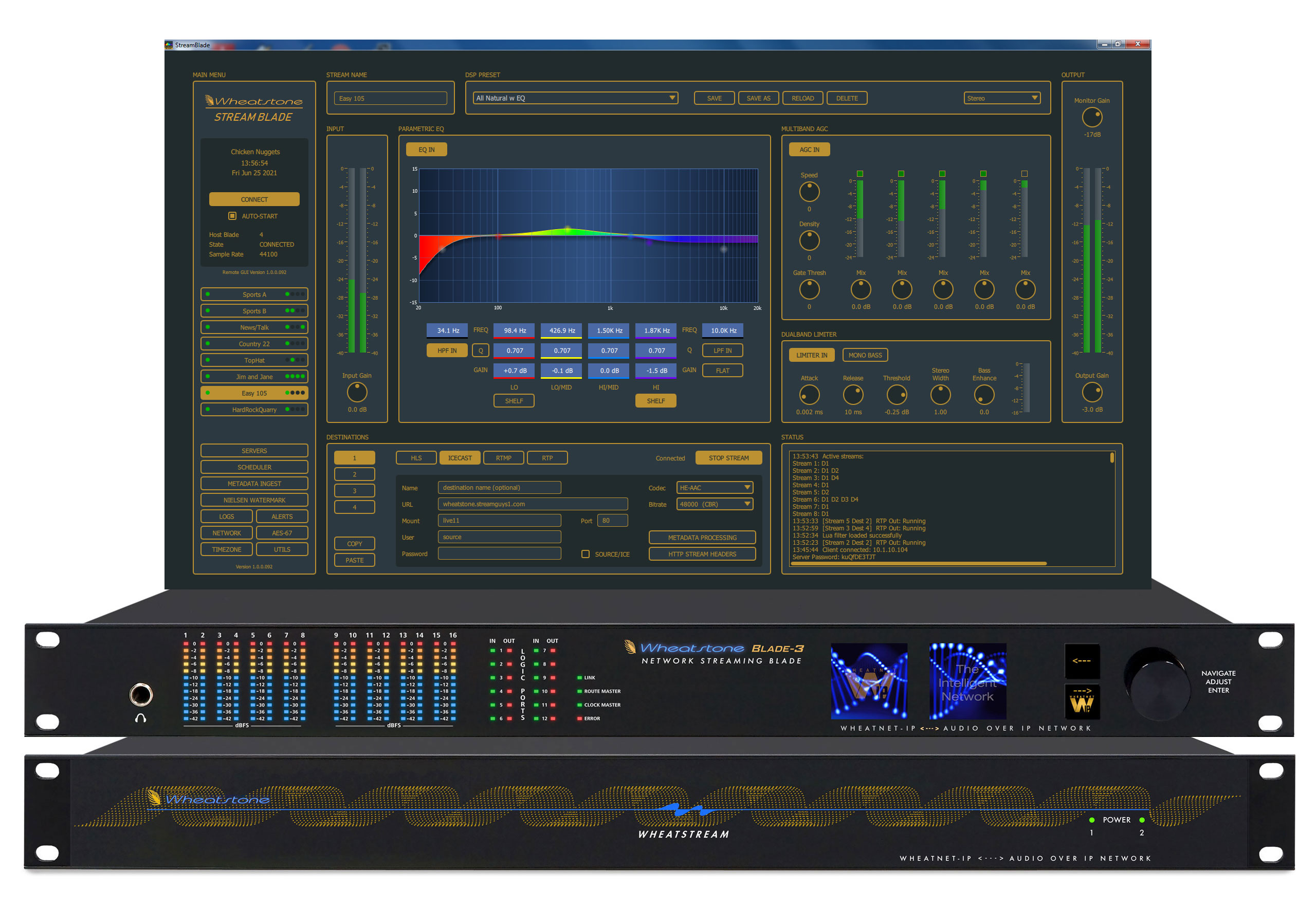 The PPM subgroup then moved on to streaming channels where being able to virtualize the PPM encoder made it possible to optimally place the watermark for best results. In the case of Wheatstream and Streamblade, the PPM watermark is inserted after the dual-band limiter for a robust, consistent signal that can be picked up by the listening device without interfering with the performance of the audio codec.
The PPM subgroup then moved on to streaming channels where being able to virtualize the PPM encoder made it possible to optimally place the watermark for best results. In the case of Wheatstream and Streamblade, the PPM watermark is inserted after the dual-band limiter for a robust, consistent signal that can be picked up by the listening device without interfering with the performance of the audio codec.
Field tests confirming the reliability and viability of embedding the PPM Software Audio Encoder in these as well as other similar broadcast products were completed in November by the PPM subgroup in collaboration with Nielsen and manufacturers such as Wheatstone. “We tested the PPM software encoder for AM, FM and more recently streaming through 11 appliances and three vendors, and it’s ready for prime time,” said Ornellas, regional DOE for Bonneville and a key member of the NAB Radio Technology Committee’s Next Generation Radio Architecture working group.
“By adding the encoder directly into the appliance, it’s really simplified the workflow for the broadcast engineer and it is saving them power, wiring, and yet another hardware device they have to worry about,” said Nick Mannion, Product Management Director for Nielsen.
Software and hardware consolidation is the central focus of the NAB Radio Technology Committee’s Next Generation Radio Architecture working group. “It’s all about how we can streamline the broadcast operation and make things more affordable, more futureproof,” said Ornellas, whose own studio projects reflect that philosophy with the use of AoIP scripting applications such as ScreenBuilder and WheatNet-IP audio networked virtual mixers alongside scriptable mixing consoles. (Read The Making of a New Studio and Come Inside Bonneville’s Open Concept Wheatstone AoIP Studios) “It’s much better to be able to do a software update than to rip out part of the studio in order to make a change,” he commented.
Embedding PPM software encoders in products like Wheatstream and Streamblade lets us add more streaming channels to the ratings equation and, just as important, solve another pressing math problem: how to reduce costs.
PART 15. WHICH IS BETTER, AM OR FM?
People often ask me which is better, Part 15 compliant AM or Part 15 compliant FM broadcasting.
Part 15 compliant AM broadcasting is often preferred by broadcast hobbyists and enthusiasts because you can reach a mile or more of legal coverage area (under Part 15.219), depending on installation and local ground continuity.
Comparatively, a typical Part 15.219 FM broadcast doesn’t get very far under the best of conditions. Your typical tabletop FM radio is not able to pick up the signal past a few hundred feet and automobile receivers, while more sensitive than table radios, can’t receive the signal much farther. This has to do with the rather limited RF signal strength available legally for FM Part 15, which is 250 microvolts per meter measured at a distance of 3 meters from the antenna. The specified signal strength is the same regardless of frequency, whether you’re broadcasting on 88 MHz or 108 MHz. Unlicensed operation outside of what is specified under FM Part 15 rules is defined by the FCC as pirate broadcasting and is punishable under law.
Once we move over to the AM band, however, license-free, legal transmission under FCC Part 15 becomes far more constructive. The calculated formula for Part 15 AM broadcast is equal to 24000 divided by the frequency (in KHz) measured at a distance of 30 meters away from the intentional radiator (i.e., antenna). For example, for the broadcast frequency of 1700 KHz, it would be 24000 divided by 1700, which would equal 14 microvolts per meter measured at a distance of 30 meters. Most FCC certified AM transmitters are designed to operate under Part 15.219, which allows a maximum of 100 milliwatts input power to the final RF stage in addition to a combined antenna and ground lead length of 3 meters (approximately 9.84 feet). With today’s more efficient Part 15 AM transmitters this is how a better and legal coverage is allowed as opposed to what is defined under Part 15.209.
There are also alternate regulations favoring college or university stations with regard to measured field intensity and the operating perimeter, plus the FCC provides alternate ways to measure coverage for those who are experimenting with Part 15 AM broadcasting and can’t afford an accurate field intensity survey.
You can find more information on the hobbybroadcaster.net website along with product reviews.
Bill DeFelice is a longtime broadcast engineer with WMNR-FM in Monroe, Connecticut. In addition to his day job, Bill runs a Part 15 deep oldies station from his home that “gets down to the bakery.” He also runs the hobbybroadcaster.net website and is a huge fan of Audioarts consoles. He reviewed the Air-1 console a while back. Read Air-1 Product Evaluation.
Radio Zürisee Video Vignette
Thanks to Markus Stocker for assembling this video montage of Radio Zürisee interlaced with manufacturing scenes.
SCREENBUILDER SCRIPTER'S FORUM
Are you a ScreenBuilder or ConsoleBuilder power user? Register and log onto our Scripters Forum. This is a new meeting place for anyone interested in developing new screens and workflows for our WheatNet-IP audio network. Share scripts, screen shots and ideas with others also developing virtual news desks, control panels, and signal monitors. You’ll find documents, starter scripts and a whole knowledge base available to you for making customized screens like those pictured.
The Wheatstone online store is now open! You can purchase demo units, spare cards, subassemblies, modules and other discontinued or out-of-production components for Wheatstone, Audioarts, PR&E and VoxPro products online, or call Wheatstone customer support at 252-638-7000 or contact the Wheatstone technical support team online as usual.
The store is another convenience at wheatstone.com, where you can access product manuals, white papers and tutorials as well as technical and discussion forums such as our AoIP Scripters Forum.
Compare All of Wheatstone's Remote Solutions
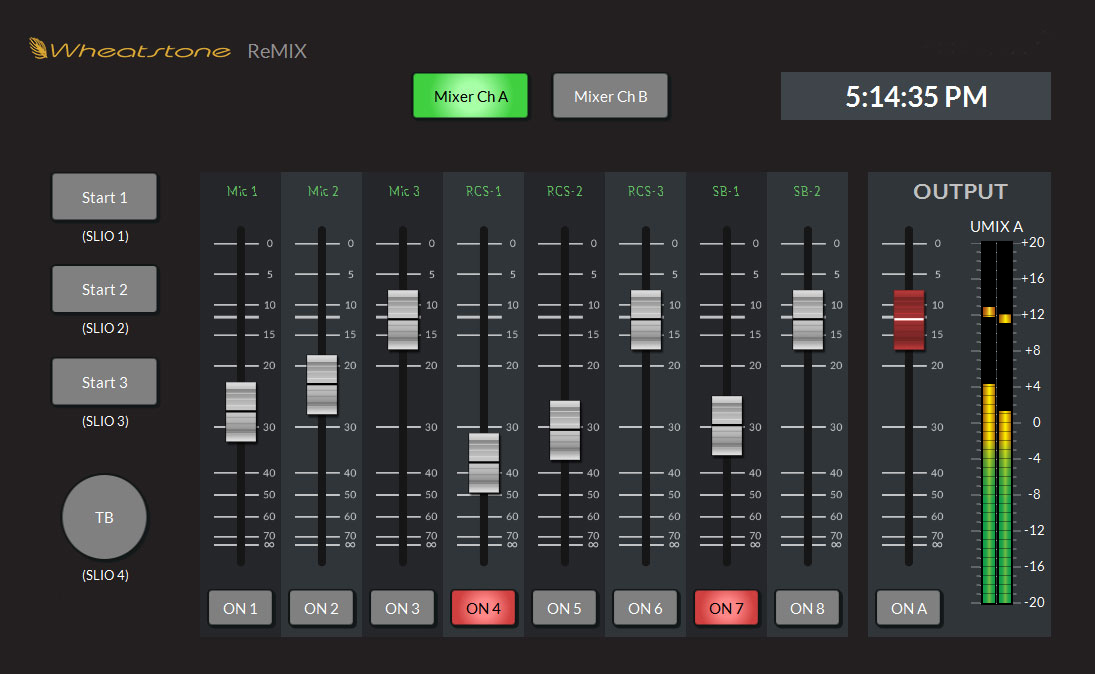 We've got remote solutions for virtually every networkable console we've built in the last 20 years or so. For basic volume, on/off, bus assign, logic, it's as easy as running an app either locally with a good VPN, or back at the studio, using a remote-access app such as Teambuilder to run.
We've got remote solutions for virtually every networkable console we've built in the last 20 years or so. For basic volume, on/off, bus assign, logic, it's as easy as running an app either locally with a good VPN, or back at the studio, using a remote-access app such as Teambuilder to run.
Remote Solutions Video Demonstrations
Jay Tyler recently completed a series of videos demonstrating the various solutions Wheatstone offers for remote broadcasting.
Check out the chart below, and/or click here to learn more on our Remote Solutions web page.
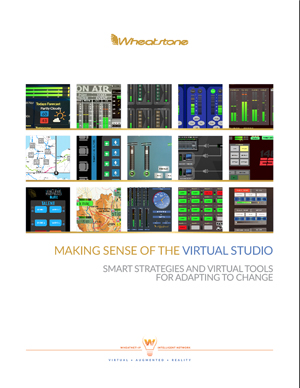 Making Sense of the Virtual Studio
Making Sense of the Virtual Studio
SMART STRATEGIES AND VIRTUAL TOOLS FOR ADAPTING TO CHANGE
Curious about how the modern studio has evolved in an IP world? Virtualization of the studio is WAY more than tossing a control surface on a touch screen. With today's tools, you can virtualize control over almost ANYTHING you want to do with your audio network. This free e-book illustrates what real-world engineers and radio studios are doing. Pretty amazing stuff.
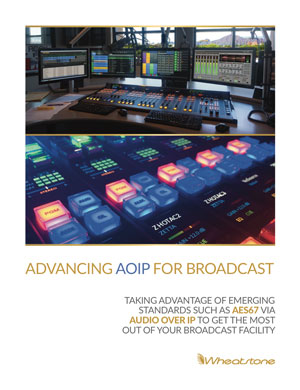 Advancing AOIP for Broadcast
Advancing AOIP for Broadcast
TAKING ADVANTAGE OF EMERGING STANDARDS SUCH AS AES67 VIA AUDIO OVER IP TO GET THE MOST OUT OF YOUR BROADCAST FACILITY
Putting together a new studio? Updating an existing studio? This collection of articles, white papers, and brand new material can help you get the most out of your venture. Best of all, it's FREE to download!
IP Audio for TV Production and Beyond
WHAT YOU NEED TO KNOW ABOUT MANAGING MORE CHANNELS, MORE MIXES, AND MORE REMOTE VENUES
For this FREE e-book download, we've put together this e-book with fresh info and some of the articles that we've authored for our website, white papers, and news that dives into some of the cool stuff you can do with a modern AoIP network like Wheatstone's WheatNet-IP.
Got feedback or questions? Click my name below to send us an e-mail. You can also use the links at the top or bottom of the page to follow us on popular social networking sites and the tabs will take you to our most often visited pages.

